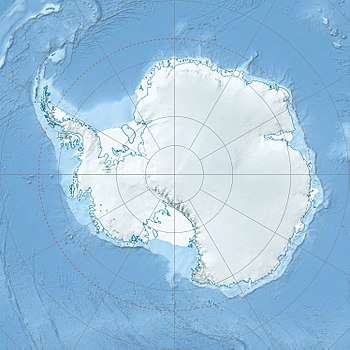May Glacier
May Glacier (66°13′S 130°30′E) is a channel glacier about 5 nautical miles (9 km) wide and 6 nautical miles (11 km) long, flowing to the coast of Antarctica between Cape Morse and Cape Carr. It was delineated from air photos taken by U.S. Navy Operation Highjump (1946–47), and was named by the Advisory Committee on Antarctic Names for William May, passed midshipman on the Flying Fish of the United States Exploring Expedition (1838–42) under Charles Wilkes.[1]
| May Glacier | |
|---|---|
 Map of Antarctica, with Wilkes Land slightly to the right | |
 Location of May Glacier in Antarctica | |
| Type | channel |
| Location | Wilkes Land |
| Coordinates | 66°13′00″S 130°30′00″E |
| Length | 6 nautical miles (11 km; 6.9 mi) |
| Width | 5 nautical miles (9.3 km; 5.8 mi) |
| Thickness | unknown |
| Terminus | between Cape Morse and Cape Carr |
| Status | unknown |
References
- "May Glacier". Geographic Names Information System. United States Geological Survey. Retrieved 2013-08-30.

| Types |
| ||||||
|---|---|---|---|---|---|---|---|
| Anatomy |
| ||||||
| Processes | |||||||
| Measurements | |||||||
| Volcanic relations | |||||||
| Landforms |
| ||||||
| |||||||
This article is issued from Wikipedia. The text is licensed under Creative Commons - Attribution - Sharealike. Additional terms may apply for the media files.